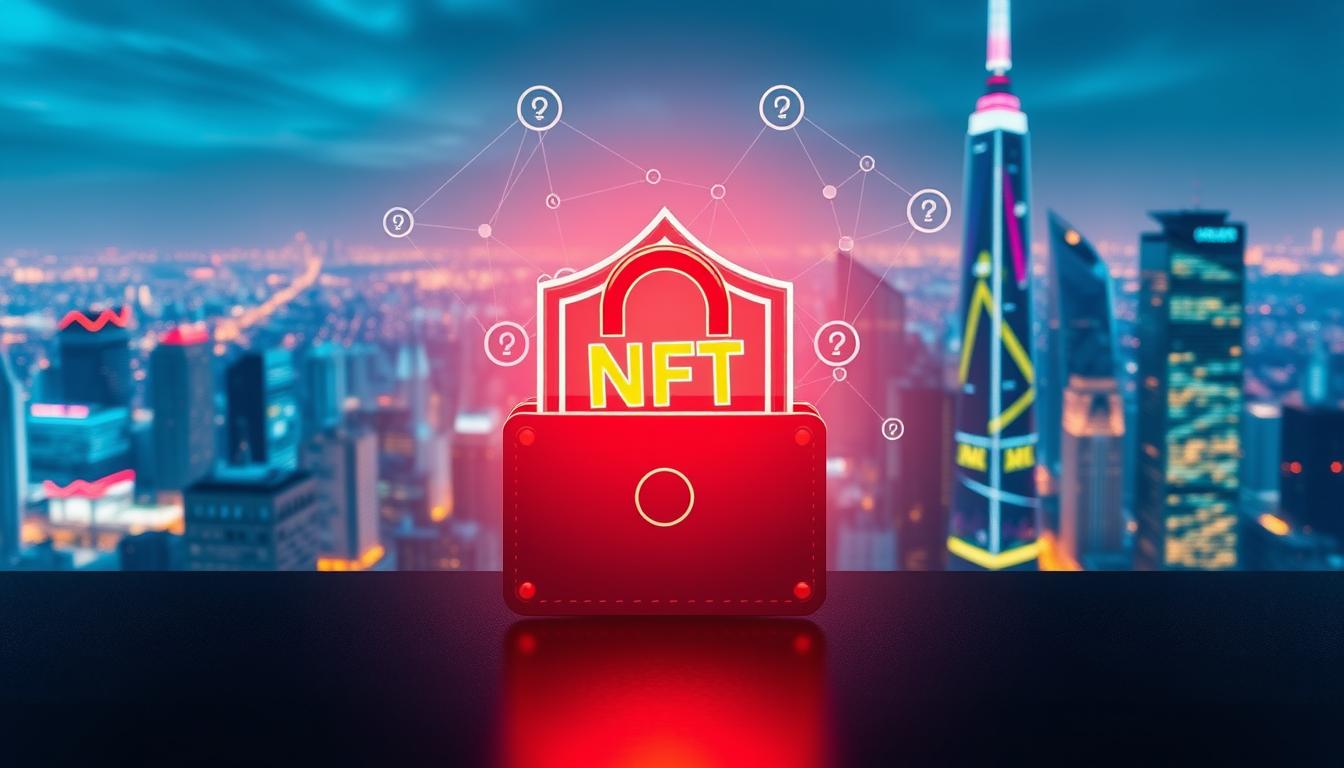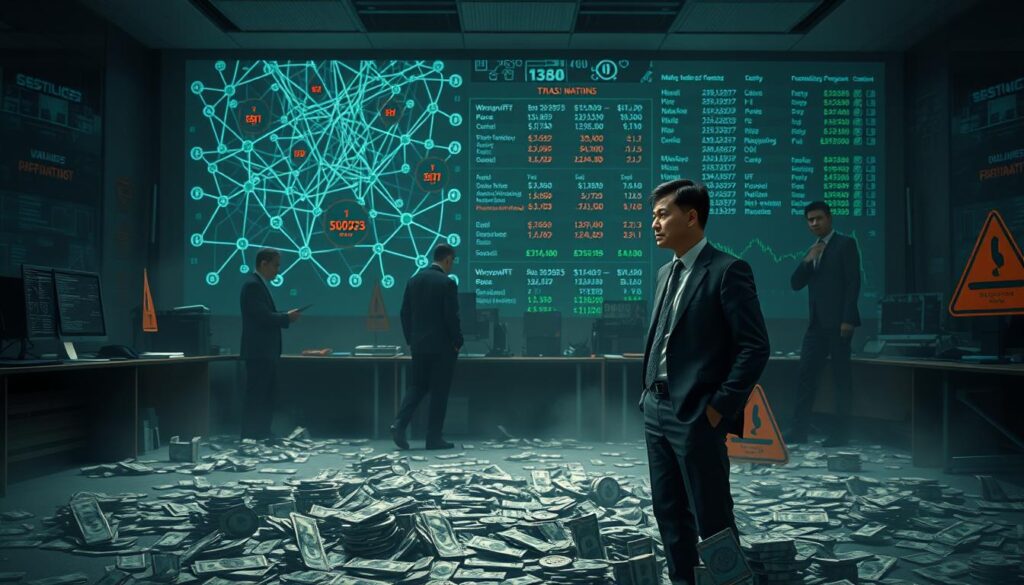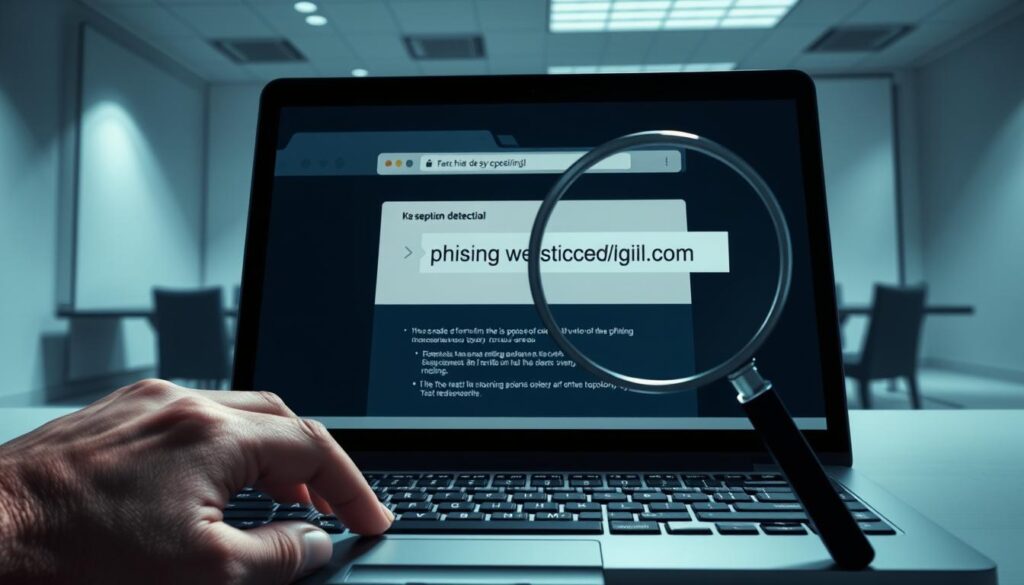Now Reading: Learn how to avoid NFT scams and fake collections Safely
- 01
Learn how to avoid NFT scams and fake collections Safely
Learn how to avoid NFT scams and fake collections Safely

Non-fungible tokens have transformed how we own and trade digital assets. From virtual art to collectibles, these unique blockchain-based items created a $23 billion market in 2021. Iconic sales like Beeple’s The First 5,000 Days—which fetched $69.3 million—showcase their potential value. Yet this innovation comes with risks many overlook.
The unregulated nature of digital ownership spaces leaves room for exploitation. Malicious actors often impersonate creators or manipulate trends to push counterfeit works. Recent reports indicate over 80% of minted items on major lack authenticity, leaving buyers with worthless files.
This guide focuses on building awareness. You’ll discover methods to verify creators, spot red flags in listings, and secure digital wallets against phishing attempts. Whether you’re exploring crypto art for the first time or expanding a collection, these strategies help separate genuine opportunities from fraudulent schemes.
Key Takeaways
- Understand the core features that give non-fungible tokens their value
- Recognize impersonation tactics used in social media and marketplace listings
- Identify patterns linked to counterfeit collections and manipulated auctions
- Implement wallet security measures to prevent unauthorized access
- Evaluate project legitimacy through transparent creator histories
Understanding NFT Scams and Their Impact
While blockchain technology offers new ways to verify ownership, its decentralized nature creates opportunities for exploitation. Fraudulent activities in this sphere often mimic legitimate transactions but leave buyers with worthless files or stolen funds.

Defining Scams in the NFT Space
Bad actors employ advanced tactics to trick collectors. Some replicate popular digital artworks using slight modifications, while others manipulate bidding processes to inflate prices artificially. Smart contract vulnerabilities remain a prime target, allowing thieves to drain wallets during seemingly routine transactions.
Three common methods stand out:
- Counterfeit collections mimicking established artists’ styles
- Fake limited editions advertised as exclusive drops
- Phony giveaways requiring wallet connections
Impact on Digital Art and Creators
Authentic artists face identity theft when scammers impersonate their social media profiles. A 2023 ArtStation report revealed 1 in 5 creators had their work copied and sold without permission. This erodes collector confidence and devalues original pieces.
Financial repercussions extend beyond individual losses. Marketplaces spend millions annually combating fake listings, costs often passed to legitimate sellers through higher fees. Such challenges slow mainstream adoption of blockchain-based art solutions.
Overview of the Rapidly Growing NFT Market
Marketplaces for digital collectibles have exploded in popularity, drawing global attention. In 2021 alone, over $23 billion worth of trades reshaped how we perceive ownership. What began as experimental blockchain projects now spans art, gaming, and virtual real estate.

Mainstream adoption accelerated when auction giants like Christie’s sold Beeple’s artwork for millions. Tech companies and celebrities soon launched their own platforms, cementing blockchain tokens as legitimate investments. This shift created a thriving industry where creators and collectors collaborate globally.
However, rapid growth brings challenges. Decentralized systems offer transparency but lack traditional safeguards. Fraudulent schemes now target high-value transactions, exploiting gaps in regulation. Over 60% of new participants report limited understanding of blockchain risks.
| Market Sector | 2021 Sales Volume | Growth Rate |
|---|---|---|
| Digital Art | $12.4B | +210% |
| Virtual Real Estate | $3.1B | +490% |
| Sports Collectibles | $2.7B | +180% |
Major platforms now implement stricter verification to combat counterfeit listings. Yet the market’s decentralized nature means vigilance remains essential. Understanding its scale helps identify genuine opportunities amid sophisticated threats.
Identifying Common NFT Scams
Digital collectible markets face persistent threats from deceptive schemes. Two dominant patterns emerge: counterfeit art replication and coordinated exit strategies. Both exploit limited buyer awareness while mimicking legitimate transactions.

Counterfeit Art and Fake Collectibles
Fraudulent creators duplicate popular works using pixel-perfect copies. The Frosties incident saw $1.3 million vanish when developers abandoned their project. Always verify blockchain records and creator signatures before purchasing.
| Authentic Collectible | Counterfeit Red Flags |
|---|---|
| Verified creator wallet | Anonymous or mismatched profiles |
| Documented ownership history | Recent mint dates on old designs |
| Active community engagement | Bot-driven social media activity |
Rug-Pull and Exit Strategies
Scammers build hype through fake endorsements before disappearing. One group used influencer partnerships to promote a gaming project, then disabled all communication channels post-launch. Check developer track records across multiple platforms.
Look for sudden changes in roadmap priorities or delayed rewards. Legitimate teams maintain transparent updates even during setbacks. Cross-reference whitepaper claims with third-party audits for added security.
Spotting Phishing and Impersonation Techniques
The digital art ecosystem faces sophisticated deception tactics designed to exploit trust. Scammers frequently clone official platforms, using near-identical interfaces to harvest sensitive data. One notorious incident involved Fractal’s Discord breach, where 370 users lost 862 SOL ($150,000) through malicious links disguised as legitimate announcements.

Recognizing Suspicious Emails and Links
Fraudulent messages often mimic trusted brands with polished templates. Look for mismatched sender addresses like “[email protected]” instead of official domains. Urgent requests to “verify your wallet” or “claim exclusive access” should trigger immediate skepticism.
| Legitimate Communication | Phishing Red Flags |
|---|---|
| Personalized greetings | Generic salutations |
| Clear sender identification | Masked email addresses |
| No pressure to act | Countdown timers |
Avoiding Typosquatted Websites
Cybercriminals register domains like “rariblee.com” to trick collectors. Always manually type URLs instead of clicking links. Enable bookmark folders for frequent marketplaces to prevent accidental navigation to cloned sites.
Social media impersonators often lack verification badges or post irregularly. Cross-check account creation dates against project launch timelines. For advanced protection against DApp phishing schemes, consider using dedicated browser profiles for crypto activities.
how to avoid NFT scams and fake collections
Protecting digital assets starts with thorough research and verification. Savvy buyers prioritize authenticity checks before engaging with new opportunities. This approach minimizes exposure to fraudulent schemes while supporting legitimate creators.
Verification Tactics for Modern Collectors
Begin by examining creator profiles across official websites and verified social channels. Established artists typically showcase consistent portfolios with timestamped achievements. Cross-referencing details like wallet addresses and collaboration histories helps confirm legitimacy.
| Reliable Sources | Unreliable Indicators |
|---|---|
| Verified social media badges | Anonymous team members |
| Multi-platform consistency | Conflicting project details |
| Third-party audit reports | Unaudited smart contracts |
Blockchain explorers reveal critical transaction patterns. Sudden spikes in minting activity or irregular ownership transfers often signal artificial demand. Technical analysis of smart contract code provides insight into a project’s operational integrity.
Artistic authenticity extends beyond digital files. Check for real-world exhibition records or gallery partnerships that validate creator credentials. Genuine communities exhibit organic engagement – watch for disproportionate bot activity in Discord servers or Telegram groups.
For comprehensive protection strategies, explore our guide on how to secure your digital collectibles. Combining these verification methods creates multiple layers of defense against evolving threats in the blockchain space.
Safeguarding Your Digital Wallets and Assets
Owners of blockchain-based items must prioritize security measures that match their assets’ value. Proper protection combines physical devices with behavioral practices to create multiple defense layers against unauthorized access.
Hardware Solutions for Maximum Protection
Physical storage devices like Ledger or Trezor keep private keys offline. These tools block remote hacking attempts while allowing secure transactions through USB connections. Pair them with two-step verification methods for marketplace logins – Google Authenticator apps prove more reliable than SMS codes.
Operational Security Essentials
Create three encrypted backups of recovery phrases using fireproof materials. Store them in separate locations like bank vaults or personal safes. Never photograph or type these credentials on internet-connected devices.
| Security Method | Protection Level | Implementation Difficulty |
|---|---|---|
| Hardware Wallets | High | Moderate |
| Authenticator Apps | Medium | Easy |
| Paper Backups | Essential | Simple |
Conduct monthly checks of wallet permissions through platforms like Etherscan. Revoke unnecessary smart contract approvals that could drain tokens. For active traders, maintain separate “hot” and “cold” wallets – store 90% of assets offline while using the remainder for marketplace interactions.
Evaluating NFT Marketplaces and Platforms
Selecting the right trading environment significantly impacts your blockchain asset security. Established platforms like OpenSea and Rarible set industry standards through multi-layered protection systems. These spaces combine user-friendly interfaces with advanced verification protocols to maintain ecosystem integrity.
Criteria for Trusted Marketplaces
Reputable platforms demonstrate reliability through verifiable track records. Look for marketplaces with at least two years of operational history and partnerships with recognized brands like Adidas or TIME Magazine. Transparent fee structures and regulatory compliance with SEC guidelines often indicate legitimate operations.
Community trust manifests through active Discord channels with 50,000+ members and swift customer support responses. Platforms listing blue-chip collections like Bored Ape Yacht Club typically undergo rigorous vetting processes. Cross-check leadership teams’ LinkedIn profiles against project documentation for consistency.
Security Features to Look For
Top-tier marketplaces deploy military-grade encryption alongside mandatory KYC checks. Essential safeguards include:
| Feature | Benefit | Example |
|---|---|---|
| Smart Contract Audits | Prevents code exploits | CertiK-certified platforms |
| Escrow Services | Secures payments | Foundation’s timed releases |
| Insurance Funds | Covers theft incidents | SuperRare’s $1M protection |
Mobile apps from major platforms should offer biometric login options. Prioritize services with 24/7 transaction monitoring and real-time fraud alerts. Newer marketplaces require third-party audit reports from firms like Hacken before earning user trust.
Always verify platform URLs through official social media channels. Bookmark authenticated addresses to prevent typosquatting attacks during high-value transactions.
Understanding Smart Contracts in NFTs
Self-executing agreements form the backbone of digital ownership systems. These automated protocols manage asset transfers and royalty distributions without human intervention. Savvy collectors treat them as binding legal frameworks within the blockchain ecosystem.
How Smart Contracts Function
Programmed rules activate when preset conditions meet. A contract might automatically send 10% resale royalties to creators or lock tokens for six months post-purchase. Every interaction leaves an immutable record on distributed ledgers.
Key Elements to Verify in Contracts
Audit reports from firms like CertiK reveal hidden admin privileges. Check for minting limits and royalty percentages matching project claims. Suspicious code often includes unlimited transaction allowances or reversible ownership clauses.
Gas fees fluctuate based on network congestion. Schedule high-value blockchain interactions during off-peak hours. Always test new contracts with small amounts before committing significant assets.
Third-party verified agreements reduce risks significantly. Platforms like OpenSea display audit badges for vetted collections. Combine this with wallet permissions reviews to maintain full control over your tokens.











